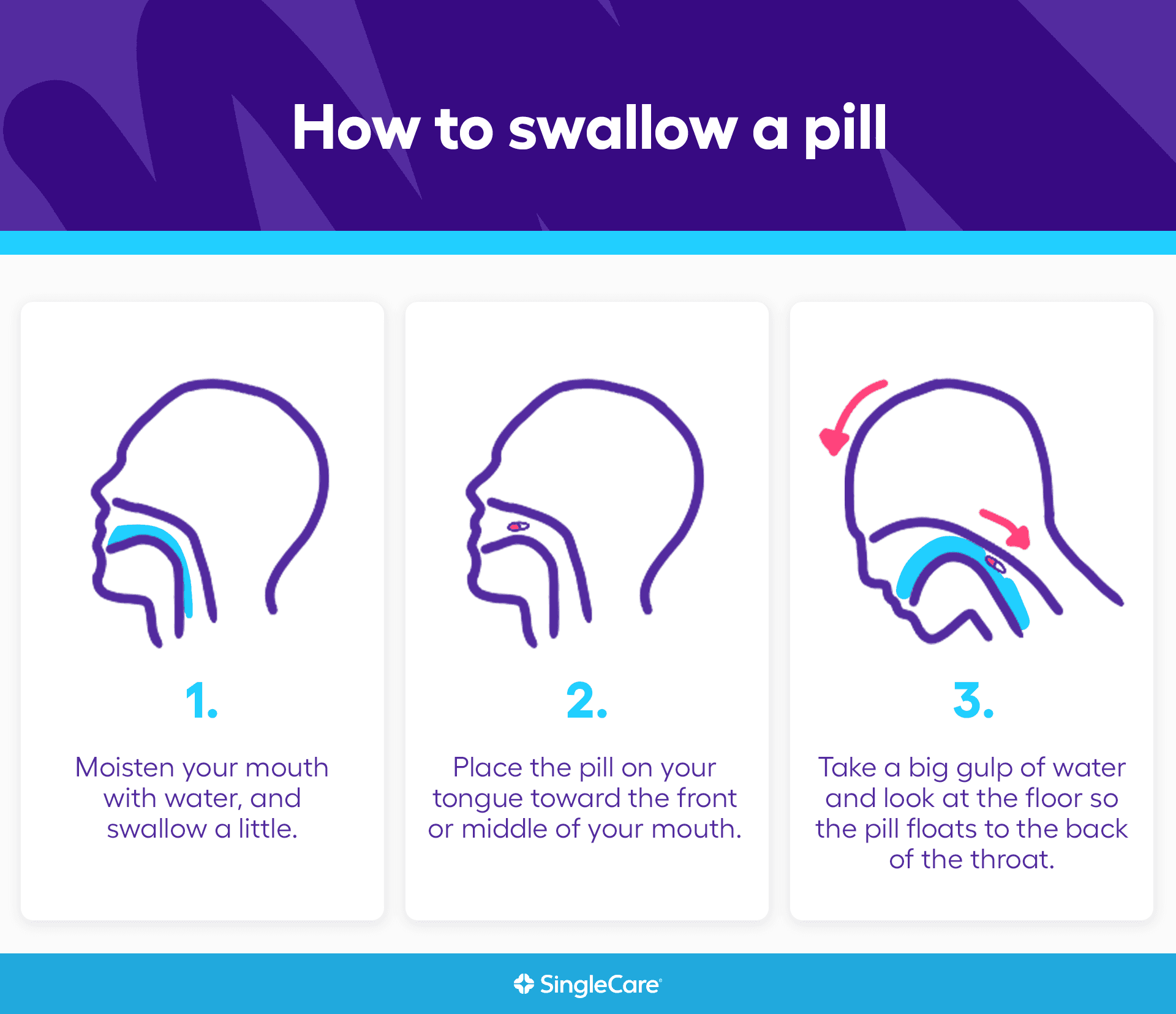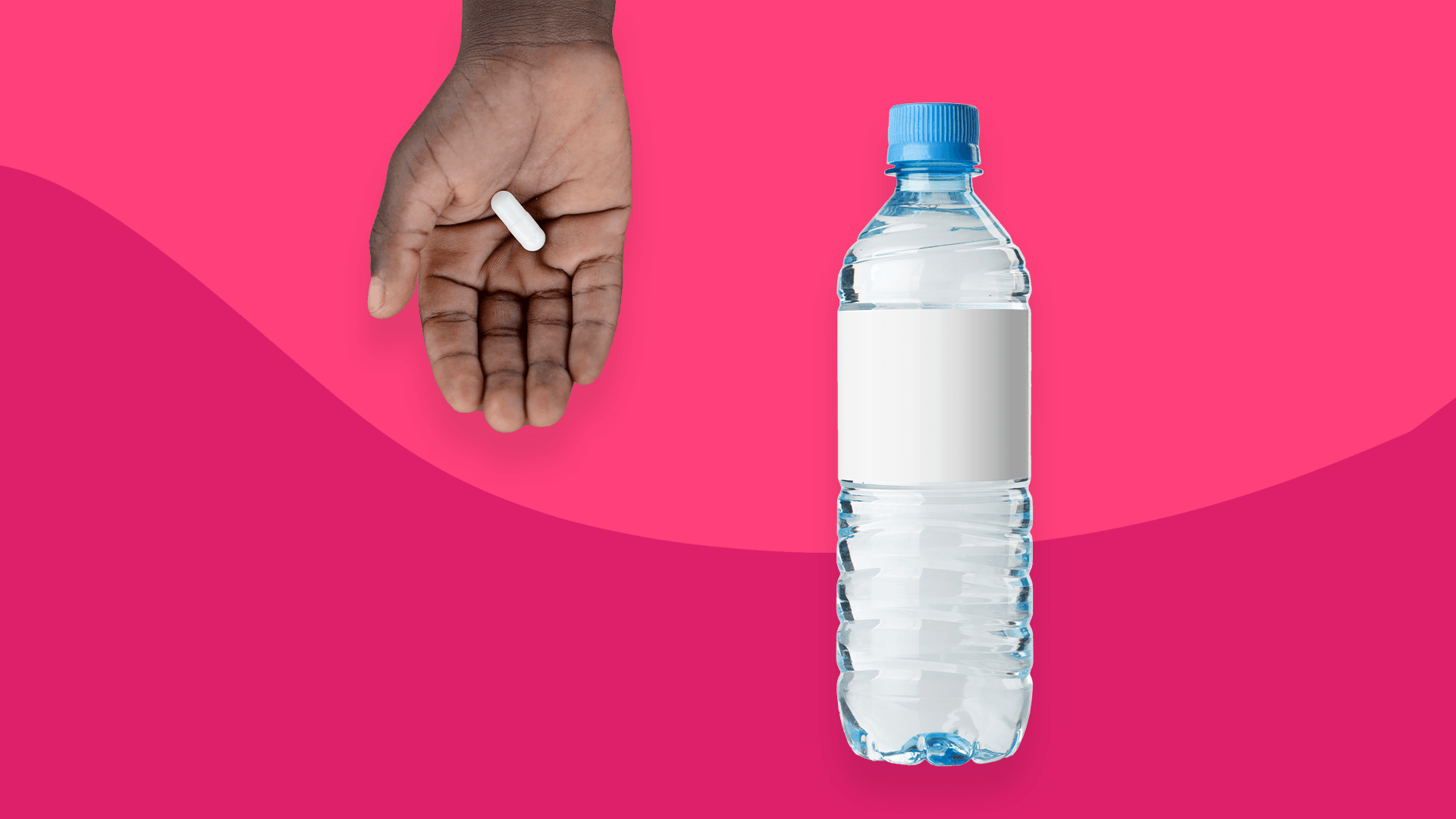Like riding a bike or counting from one to 10, swallowing a pill is something you’ll need to teach your child. Much like other skills, some children swallow medication naturally and quickly—while others will need a little extra guidance. While this is inconvenient when your child is already not feeling their best, learning how to swallow a pill is a necessary life lesson.
Medications commonly prescribed to kids are usually available in different forms—liquid or capsules you can put into food—precisely because it’s so common for children to have difficulty swallowing tablets. Yet, liquids or capsules may come with drawbacks. They might have a flavor your child doesn’t like, or needs refrigeration, which further complicates giving medication while traveling. And, as your child grows older, not all medications can be crushed, mixed into liquids, or split—such as time-released medications or coated tablets. Difficulty taking medication greatly impacts medication adherence. A study found that 70% of people who had difficulty swallowing pills (also called dysphagia) skipped medication. Before that becomes an issue, use this guide on how to get a child to swallow a pill.
Why children have a hard time swallowing a pill
If it’s your child’s first time swallowing a pill, it might help you to understand why they struggle with this skill. First, it’s common. One study found that 26% of the participants of all ages had trouble swallowing tablets. It may be because children’s oral muscular and nervous systems aren’t fully developed yet.
Others have an overactive gag reflex making them feel like they are going to vomit when they try to swallow a pill. This adds up to a negative experience. That may cause them to experience a tightness in their throat (sometimes called a globus sensation) from fear or anxiety about swallowing the pill.
Difficulty swallowing pills can be a dental issue, such as dry mouth. “We often see children and adults struggle with swallowing pills when they have a forward tongue thrust,” says Christine Miroddi Yoder, a speech pathologist and founder of Cove Speech Therapy. “This is when the tongue is pushing food forward instead of backward. When there is a hard substance like a pill that doesn’t stick to the tongue as well as food, it makes it easy for the pill to slide forward in the mouth.” This can make medicine harder to swallow.
Fear of swallowing pills
“The most common fear kids have is choking on the pill,” says Pierrette Mimi Poinsett, MD, a medical consultant at Mom Loves Best. This fear may have developed if they choked on food or candy in the past. Some kids with sensory issues are more aware of the feeling of the pill going down their throat, which may develop into a fear of choking, or the pill getting stuck.
Like other fears and phobias, finding the source of your children’s anxiety and helping them learn how to swallow a pill can make a difference. Reasoning with your child on why taking medication is necessary may also help. Remind your children that swallowing a pill is similar to other skills they learned like reading or writing. Practice makes it easier. Try these techniques.
Tips on how to swallow a pill
“It may take a couple of weeks for your child to learn how to swallow a pill,” Dr. Poinsett says. “Most children can learn to swallow a pill at about age 10. Some children can learn how to swallow a pill as early as age 5 or 6.”
First practice with smaller pieces of candy like Tic Tacs or mini M&Ms. Then, work your way up to larger sizes, like Good & Plenty or Mike and Ikes. Explain and then demonstrate the following steps to swallow a pill:
- Moisten your mouth with water, and swallow a little.
- Place the pill, or candy, on your tongue toward the front or middle of your mouth. (The back of your tongue can trigger a gag reflex.)
- Take a big gulp of water and look at the floor so the pill floats to the back of the throat.
Once your child is able to swallow the candy during a practice session, repeat the steps with the pill. Provide lots of praise and positive reinforcement. If those three steps aren’t enough, these ideas can help.
1. Use a soda bottle
First fill up a plastic water bottle or soda bottle that has a narrow opening with water. Have your children put the pill in their mouths, then drink from the bottle making sure to keep contact between the bottle and their lips. Kids should use a sucking motion to swallow the water and pill without allowing air to get into the bottle. Researchers found that using the soda bottle method (also known as the “pop bottle method”) helped 60% of people successfully swallow a pill.
2. Try the lean forward method
Tell kids to first put the pill on their tongues and then take a sip of water—but don’t swallow. When they do swallow, they should tilt their heads down toward their chests. The lean-forward technique helped 88% of study participants to swallow pills.
3. Use a straw
Have your children place the pill on their tongue, and then use a straw to take three gulps of water. It can reduce air in the mouth and throat, making swallowing pills easier, says Sheldon Zablow, MD, author of Your Vitamins are Obsolete: The Vitamer Revolution: A Program for Healthy Living and Healthy Longevity. Additionally, the movement of sealing lips around the straw and sucking can help distract from the feeling of the pill in the mouth.
4. Take the pill with a thick liquid
Have your child take the pill with a milkshake or a different thick drink. The consistency of a smoothie will mask the feeling of the pill in the mouth, and make it less detectable as kids swallow.
5. Mix with food
“Placing the pill in a small amount of puréed food like yogurt with granola works well,” says Miroddi Yoder. “The food will help keep the pill from sliding around, and it will be swallowed with the food.” Applesauce, Jell-O, and pudding are also good choices. Before you mix the medication with food, check with your pharmacist to make sure it is okay. Some medications should be taken without eating.
Alternatives to taking pills
If you tried all the steps and your child is still struggling, take a break and ask your child’s physician for alternative medication. Some options include:
- Orally disintegrating tablets
- Chewable tablets
- Liquid form
- Capsules that can be opened and mixed with food
If the difficulty persists, you may want to have your child evaluated by a specialist such as an ear, nose, and throat doctor or a speech-language pathologist for a swallowing assessment. Some kids may have developmental delays or other problems related to the ability to swallow that a specialist can easily address.
Frequently asked questions about how to take a pill
- What is the fear of swallowing pills called? It’s called phagophobia and it’s a fear of swallowing solid foods, liquids, or pills because of worries about choking.
- How do you take a pill when you’re scared? The key to overcoming fear of swallowing pills is to distract yourself from the feeling of the pill in your mouth. For kids, using a soda bottle, or drinking a pill with a milkshake can help.
- What happens if you let a pill dissolve in your mouth? Certain medications are made to orally disintegrate, or dissolve in your mouth. These pills are often labeled on the prescription bottle ODT (orally disintegrating tablets). Regular pills are not meant to dissolve in the mouth and can harm the lining of your mouth or throat, and will taste very bitter. Or, the pill won’t break down because it requires stomach acid to fully dissolve.
- Why does it feel like a pill stuck in my throat? If your throat is very dry, the globus sensation can make it feel like the pill is stuck. Drink lots of water to help the sensation go away.
- Can you crush a pill and drink it? / Can I crush a pill and mix it with water? Always talk to your pharmacist before crushing pills. Certain medications can safely be mixed with liquids or food. Others, especially time release medications, are dangerous to crush. It can lead to overdose from too quickly absorbing too much of the medication.











